Types of Flooring: How to Choose the Best Option for Your Home
Here's what to know about hardwood, tile, stone, laminate, and more.

Ryann Ford
Flooring is one of the most important decisions when renovating or building a home, but with so many options, it can be difficult to decide on a material. There are many elements to consider, from aesthetics to price, durability, and upkeep. Plus, every room has different needs and requirements, so you’ll likely use a few different types of flooring across your home.
To help you navigate the world of flooring, we’re breaking down the eight most popular types with everything you need to know. Learn the difference between hardwood, engineered wood, and vinyl, and compare price points between tile, stone, and laminate. Here's what you need to know about each of these flooring types.
Related: 9 Affordable Kitchen Flooring Ideas That Don't Sacrifice Style
Hardwood Floors
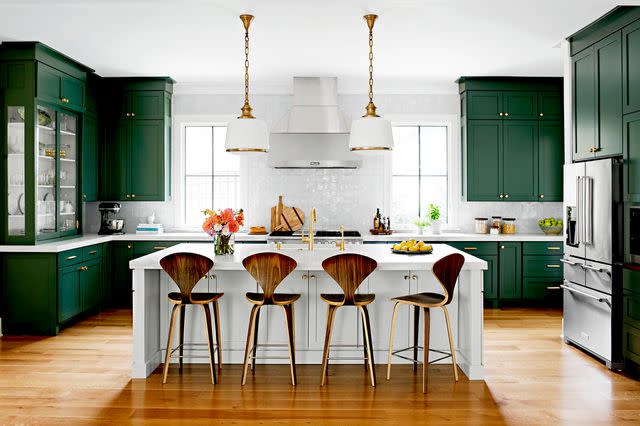
Hardwood flooring consists of solid wood planks in various hardwood varieties, including maple, oak, walnut, and cherry. Hardwood is one of the most sought-after flooring types, favored for its aesthetic appeal, versatility, and durability. Hardwood floors are timeless; they look just as good in a 19th-century Georgian property as in a new build, and they flatter almost any interior style. This is mainly thanks to the vast array of tones, grains, and finishes available and the different patterns it can be laid in, such as herringbone, chevron, brick, and basket weave.
Hardwood floors are on the more expensive end of the flooring spectrum, but they are a good investment as they are guaranteed to last and can even increase the value of your home.
While there’s no doubt about hardwood floors' durability, they do require regular maintenance and treatment with specialty hardwood floor cleaners. The good news is that if the flooring does get damaged or scratched, it can be refinished. However, they’re best avoided in bathrooms or other wet rooms, as wood warps when exposed to moisture for extended periods. Ensure your wood floor is sustainably sourced by looking for a Forest Stewardship Council mark.
Related: The 11 Best Hardwood Floor Cleaners
Engineered Wood Floors
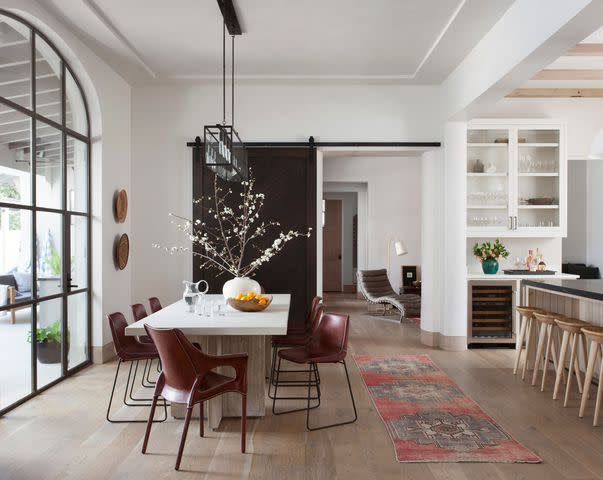
Ryann Ford
If you like the look of hardwood but don’t have the budget for it, engineered wood flooring is a great alternative. This floor type consists of a thin layer of hardwood bonded over a plywood substrate. Engineered wood floors are just as durable as their hardwood counterpart and can be treated with a high-quality coating to preserve their surface. And, they're much easier to install.
However, engineered wood can’t take as much refinishing because of its thinner top layer, so it requires more looking after. The main benefit of engineered wood over hardwood is its greater resistance to moisture and temperature changes, making it more suitable for underfloor heating systems. Just ensure you source it from a reliable manufacturer with high-quality products, as the quality can vary significantly.
Stone Flooring
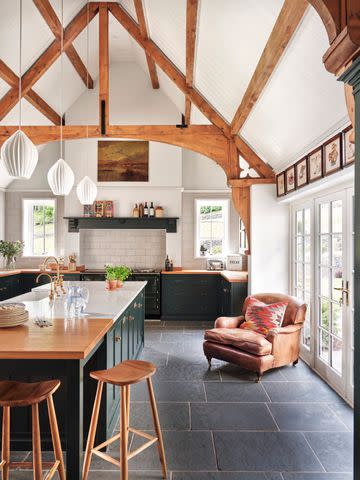
Astrid Templier
Little rivals the natural beauty of a natural stone floor. As a product of nature, each tile is unique with its markings and veining. Different types of stones suit different styles. For example, terra cotta has an earthy, Mediterranean feel, while marble is highly luxurious and polished. Limestone, travertine, and slate look fabulous in a rustic, rural setting. However, there’s more to stone’s popularity as a flooring material than its aesthetic appeal.
Stone is exceptionally hard-wearing (it literally lasts forever) and generally requires very little maintenance, so it’s great for high-traffic areas. Because stone is a porous material, it will need re-sealing to prevent stains and scratches. It’s also one of the few materials that can be used indoors and outdoors, allowing you to seamlessly transition between your indoor and outdoor space. Stone flooring works well in kitchens and bathrooms due to its water resistance; however, it can become quite slippery, but that’s nothing that can’t be fixed with a honed finish and sealant or non-slip matt.
Stone also tends to feel cool underfoot, which may be a welcome relief in summer but less so in winter. Luckily, stone conducts heat well, making it a good choice for underfloor heating systems and an energy-efficient way to heat your home. Stone floors tend to be expensive, but they are guaranteed to last a lifetime with proper care.
Tile Floors
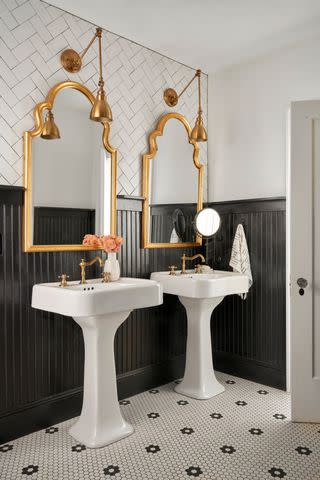
Nathan Schroder Photography
Tile is a popular flooring choice for moisture-prone spaces like bathrooms, utility rooms, and kitchens. Typically made from porcelain and ceramic, tiles are water-resistant, durable, and super versatile. Available in a wide variety of colors, shapes, and styles, tile floors present the perfect opportunity to tap into your creativity and add character to a space.
High-quality tiles are long-lasting and durable and very easy to clean and maintain. They don’t harbor dust mites or pet hair, making them an excellent option for those with allergies.
The main threats to your floor’s longevity are problems with the subfloor and grout. Issues can be prevented by cleaning and re-sealing your grout yearly in high-traffic areas. Floor tiles tend to be on the more costly end of floor materials; however, cheaper options are available.
Related: How to Clean Tile Floors, No Matter What Type (and Grout, Too!)
Concrete Floors
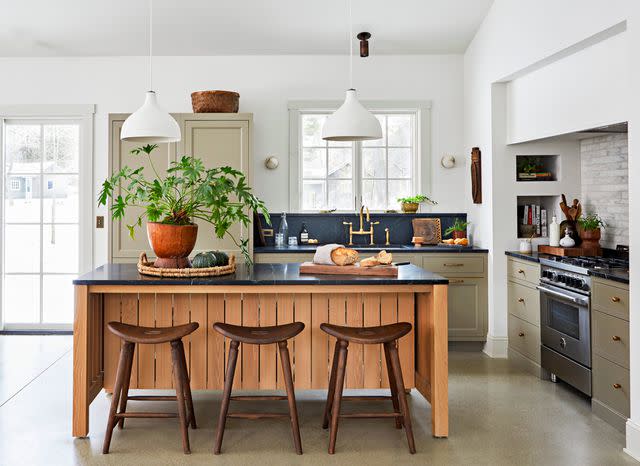
Concrete floors are becoming increasingly popular outside of their usual use in the garage and basement. Their sleek, seamless, and industrial look makes them the perfect statement in a modern, brutalist, minimalist, or industrial-style interior. Concrete flooring holds many practical advantages, too: It’s hardwearing, easy to clean, ages well, water-resistant, noise-absorbing, and highly versatile. It works well with underfloor heating and comes in various finishes, from matte to polished, brushed, raked, and pitted. It can even be dyed or littered with stones or glass beads for a textural effect.
The price of concrete varies depending on the finish and size of the space. Generally, the larger the room and the simpler the finish, the cheaper each square meter will be. While it’s not an inexpensive flooring option, it is an excellent long-term investment as it will last indefinitely and only requires a new wax or seal every one to three years.
Related: How to Stain Concrete to Make Your Home's Walkways Look Like New
Carpet
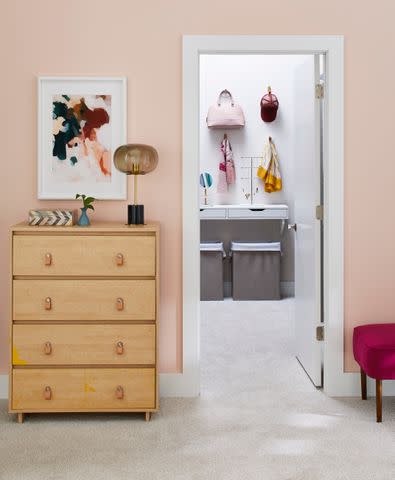
Marty Baldwin
Carpet is a popular type of flooring, particularly in places with colder climates. Not only does carpet have acoustic and thermal insulating qualities, but the soft, textured surface visually warms up the space and feels soft underfoot. That’s why they’re popular in quiet areas where you are likely to walk barefoot, like the living room and bedroom.
Carpets are available in synthetic and natural fibers and vary significantly in price and quality. Synthetic carpets don’t score too highly on the sustainable front but tend to be more budget-friendly. The plethora of colors, patterns, and textures means there’s a carpet for every interior style.
Most people’s concerns around carpets involve hygiene and maintenance. While carpet technology has evolved and many carpets now have stain-resistant qualities, carpets will eventually wear and need replacing every 5-10 years. Carpets pick up dirt and grime, so they’re not the best option for extreme allergy sufferers. They also require regular maintenance with a vacuum and steam cleaner to keep them looking their best. Where pets are concerned, steer clear from loose weaves, as claws can quickly destroy them.
Related: The 8 Best Carpet Brands of 2023 for the Perfect Home Floors
Vinyl Floors
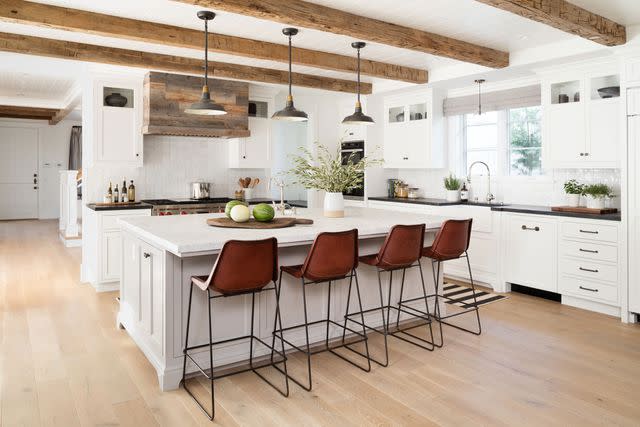
Edmund Barr
Vinyl flooring comprises layers of different materials, including polyvinyl chloride, plasticizers, and pigments. It’s available as a roll or as Luxury Vinyl Tiles (LVT) that imitate natural wood planks and tiles. Vinyl flooring is favored for its practicality and affordability. It is cheap, easy to clean and install, durable, maintenance-free, and completely waterproof, so it is often chosen for bathrooms and kitchens. Plus, the many design choices available suit a wide range of design aesthetics.
Though vinyl is durable, it can be punctured by sharp objects and can’t be repaired easily. While the wood and tile imitations are good, they don’t come close to the real deal or give you the same return on investment!
Related: The 10 Best Vinyl Plank Flooring Options of 2023
Laminate Floors
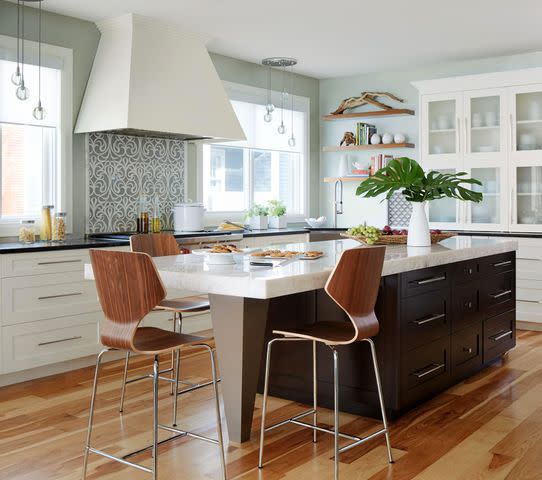
Like vinyl, laminate is another excellent option when price and practicality matter most. Laminate flooring comprises particleboard topped with a photographic image of the actual material and a layer of laminate to protect the surface. Like vinyl, it can be installed DIY, eliminating installation costs. Its main advantage over vinyl is the wide range of textures, colors, and styles available. Laminate floors are made to look like hardwood, tile, marble, and more, so you can get a high-end look with any budget.
Unfortunately, you get what you pay for with laminate. As one of the cheapest flooring options, it is less durable than other materials and is only water resistant, not waterproof. That means it’s unsuitable for high moisture areas like the bathroom, and can’t be cleaned with a wet mop. It will also need to be replaced more frequently than more durable flooring options.
Related: How to Clean Laminate Floors to Protect Their Shiny Finish
For more Better Homes & Gardens news, make sure to sign up for our newsletter!
Read the original article on Better Homes & Gardens.

